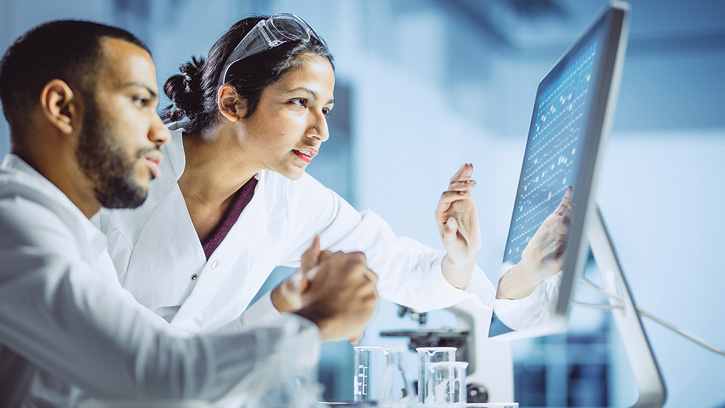Better Data Analysis = Better Food Safety
FOOD SAFETY INFOCUS
When a load of chicken is being shipped from Chile to the United States, digital RFID sensors can track environmental conditions within the shipping container. If the temperature drops below freezing for an extended period, for example, the data collected by the sensors can warn the receiving company to reject the shipment.
And when a batch of spinach sickens consumers in three different states, a food traceability database can simplify the process of quickly removing contaminated products from grocery store shelves.
Examples such as these demonstrate how the fields of food science and information technology are coming together to improve food safety and help make safe food more widely accessible. In a recent expert panel hosted by IFT, food safety leaders gathered virtually to discuss how the industry can continue to improve its use of technology to achieve a safer food supply.
Technology offers great promise for improving food safety, quality, and access while mitigating food waste. But to realize the promise of digital technologies, the food safety community must make—or continue making—some important changes, the experts agreed. If the industry is to maximize digital technologies to improve food safety, its evolution must include these approaches:
• Expanding Skill Sets. Traditionally, the field of food safety has been populated with scientists and engineers. But as new technologies have become increasingly available, offering the promise of digitally improving food safety solutions, food safety leaders must increasingly learn data management and data analysis—or hire team members who possess those skills.
For instance, the food safety team at Cargill went from relying on information technology (IT) experts for help to embedding IT experts on its own team, said Sean Leighton, vice president of food safety, quality, and regulatory at Cargill. The company now has 13 digital leaders on its food safety team worldwide, all working on digital solutions for food safety.
“There’s a fine line between data and noise,” added Amy Childress, vice president of marketing and sales, Cold Chain Cargo, for Emerson. “At any point in time, we’re monitoring 150,000 trips, and all that data is coming in through IoT (internet of things) sensors. If the data is not handled properly, it just becomes noise. We have to work with companies that have the capability to process that data and turn it into something meaningful.”
Just as professionals in almost every career must now add technology capabilities to their skills sets, food safety teams must do the same. “We need data analysts and data scientists who can take all this data and turn it into something meaningful,” Childress said.
• Storytelling Prowess. Even traditional food scientists must develop new skills to translate data into meaningful information for executive management and other stakeholders. “Many scientists, because of the way we’re trained, believe the data speak for themselves,” said Jennifer McEntire, senior vice president of food safety and technology at the United Fresh Produce Association. “But the data don’t always speak for themselves. Some people don’t care about data, and we need to become good storytellers who can translate the data. By telling a better story, we can get buy-in so we know that our decisions are based on data.”
While the traditional food safety professional has always been good at generating data, they haven’t always been experts at using that data, McEntire said. But in order to really use technology to improve food safety, professionals must be able to make good decisions based on the data they’re collecting.
For example, digital data may show that, based on historical information, conditions are ideal this season for certain pests or fungi to thrive in a certain agricultural region. If scientists can share the data with growers in advance, explaining how the conditions are likely to affect their crops and the food supply, growers can take steps to prevent the growth of the fungi or the assault of the pests. As a result, sharing the story of the data can help ensure a healthy crop.


